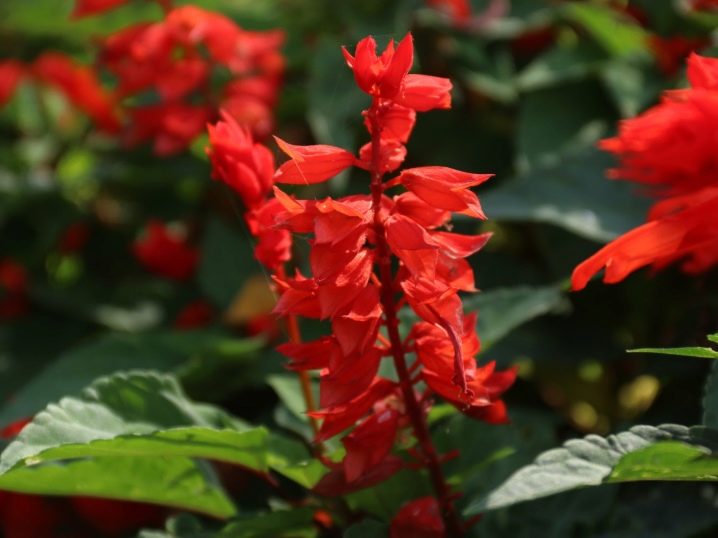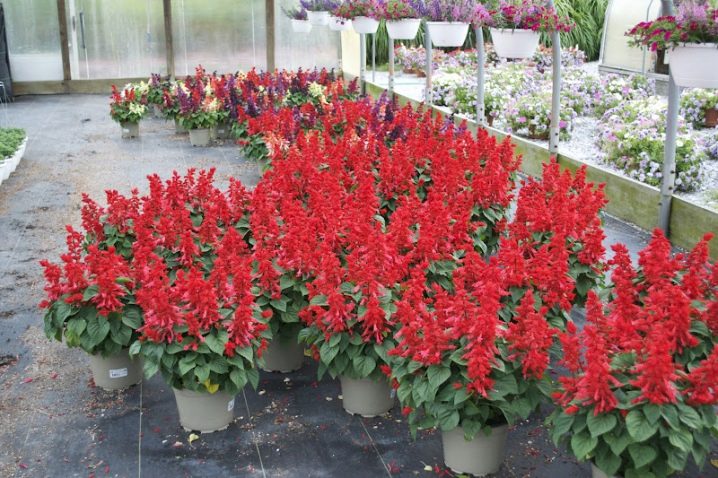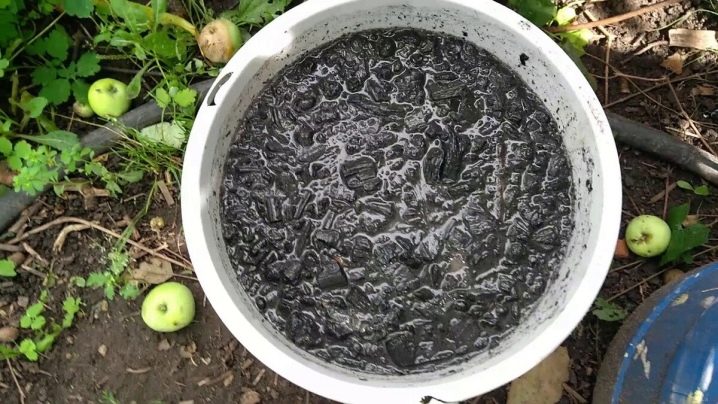All about salvia red

It is easy to guess that red salvia got its name because of the identical shade of the inflorescences. The most popular variety is also called "Lady in Red" by many growers. An ornamental plant is successfully cultivated. But in order for it to have an attractive appearance, it is necessary to carry out correct and timely care.

general description
Mexico is considered the birthplace of red salvia. Currently, in the wild, the plant can be found in South and Central America. Several centuries ago, Salvia seeds were introduced to the Pacific Islands, as well as to Australia. About 200 years after the first discovery, the seeds of the plant were brought to Europe. Despite the relatively wide distribution of this species, the most popular all over the world is the sparkling salvia.

Salvia perennial grows in fields, light forests, as well as on roadsides. Belongs to the family of ash-trees, in temperate climatic zones it is successfully grown as an annual. The maximum plant height reaches 1.5 m. The stems are rather large, with an edge. Forking begins approximately in the middle. The foliage is arranged in opposite order. The leaves have a heart-shaped base. In length they reach 6 cm, and in width - no more than 1-2 cm.


Red flowers are collected in racemose inflorescences at the top. Because of this, the plant looks very attractive. The flowering period is quite long: it begins in mid-July and lasts until the first autumn frosts.
Popular varieties
Salvia red has many varieties. Let's list the most popular among them.
-
Lady in red - this variety is the most widespread among the rest. It was bred in 1966, reaches a height of no more than 30 cm, has rather dense purple inflorescences.

- Cherry blossom - differs in early flowering and short growth, about 40 cm. Inflorescences are pink.

- Jewel pink - an unusual variety, a distinctive feature of which are inflorescences of a pale salmon color.

- Jewel red - differs in the ability to bloom as early as 2 months after sowing. Inflorescences are red, cups are purple. The stem grows to a height of 40-60 cm.

- Jewel lavender - in terms of characteristics, it practically does not differ from the previous variety, except that it has lavender inflorescences.


- Forest fire - it is distinguished by bright inflorescences of a fiery shade.

-
Pseudococcinea Is a subspecies that is often described as a separate cultivar. The plant is quite tall and powerful. Reaches 1.2 m, the stem is pubescent, there are many scarlet inflorescences on it. Most commonly grown in the UK. It is practically not cultivated on the territory of Russia.

Despite the difference in description and appearance, the plants require almost identical care.
Planting and leaving
As a perennial, this plant can be grown only in the southern regions, where in winter the air temperature does not drop below +12 degrees. At a lower temperature, the plant will freeze.
Before planting salvia, you need to choose the most suitable site. It should be a bright place, but without the intense presence of sunlight.

If we talk about the soil, then it must be fertile. In terms of acidity, weakly acidic or alkaline is most suitable. A drainage layer must be created without fail.
During the growing season, it is recommended to periodically apply complex mineral fertilizers. Watering is required regular and moderate. With insufficient moisture, the inflorescences will be frail and pale. An excess of liquid in the soil threatens salvia with death. It begins with decay of the root system, the whole plant gradually dies.


In addition to all of the above, it is recommended to periodically weed the weeds, loosen the soil for normal air exchange. Wilted inflorescences should be trimmed in a timely manner, as this stimulates the appearance of new ones.
Reproduction
Salvia reproduces mainly by seeds. You can buy them in the store or assemble them yourself in the fall. In southern regions, seeds can be sown directly into open ground in spring. If cultivation is planned in a temperate climatic zone or in northern regions, it is recommended to grow through seedlings. Then the matured seedlings are transferred to open ground. This should be done in mid or late May. It all depends on the region, as well as on the weather conditions. After planting in open ground, for the first time, the plant needs increased watering.

Diseases and pests
The most common disease affecting salvia is powdery mildew. In order to get rid of this ailment in a timely manner, it is recommended that treatment be carried out when the first symptoms appear. For this purpose, the drugs "Skor" or "Keeper" are most often used. It is permissible to spray for preventive purposes, but for this it is already recommended to use "Fitosporin-M" or "Sporobacterin".

Sometimes the ornamental plant is attacked by pests. The most active of these are aphids and slugs. They feed on the sap and leaves of the salvia, weakening the plant. In addition, they can significantly spoil the appearance. In order to reduce the attacks, it is necessary to properly care for the salvia. It supports the immune system. The plant must be sprayed with a solution of wood ash. To prevent slugs from attacking, ash paths can be made.

Slugs reproduce actively and thrive in humid environments. In order for the pests to go away, it is necessary to weed the weeds in a timely manner, to prevent excessive soil moisture. When individuals appear, it is recommended to remove them manually.
Application in landscape design
Salvias look great in a separate flower bed, as well as among other ornamental plants. Landscape designers often use red salvia in their projects. Here is the design of a city flower bed.

And this is the design of the personal plot with the help of a high grade of salvia. An ornamental plant looks very impressive because of the large red inflorescences.

The plant looks good in small flower beds, surrounded by other flowers. Here is a good example of such a composition.

And here salvia is presented as the central element of the flower bed. It looks very impressive even against the background of pale and unremarkable colors. Landscape designers often place different varieties of salvia on the same flower bed. This composition looks very attractive.

In order to grow a beautiful plant, you need to properly care for it. Without top dressing, the inflorescences will not be as bright as we would like. When all the conditions of detention are met in full, salvia will look very original on the flower beds, not only in summer, but also in autumn.































































The comment was sent successfully.